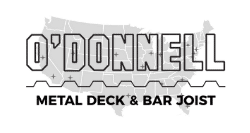In today’s rapidly evolving construction industry, metal decks have become a mainstay due to their durability, versatility and cost-effectiveness. While their attributes are widely acknowledged, the intricacies surrounding metal deck compliance, particularly the IAPMO-ES reports, remain pivotal yet slightly obscure.
This article delves into the world of metal decks, the significance of IAPMO-ES reports and their overarching benefits for the construction sector.
Understanding Metal Decks

Definition and Characteristics of Metal Decks
Metal decks are corrugated panels made from steel designed to span over joists in a floor or roof system. Their distinctive features, such as high tensile strength, lightweight design and ability to distribute load efficiently, make them favorable for many architectural endeavors.
Advantages of Using Metal Decks in Construction
Beyond their basic composition, metal decks offer numerous advantages:
- Durability: They resist corrosion to help ensure a longer lifespan for the construction.
- Design Flexibility: With various sizes, finishes and gauges available, they can be tailored to numerous design aesthetics and functionalities.
- Cost-Efficiency: Their low maintenance and longevity lead to significant cost savings in the long run.
Common Types of Metal Decks and Their Applications
There are several metal deck types, such as composite decking, roof decking and form decking. Each has its unique application, ranging from roof systems to elevated concrete slabs, in order to serve diverse construction needs.
The Significance of IAPMO-ES Reports
What Are IAPMO-ES Reports?
IAPMO-ES reports are evaluations conducted by the International Association of Plumbing and Mechanical Officials Evaluation Service. They assess product compliance with codes and standards to help ensure safety, quality and performance.
Importance of Obtaining IAPMO-ES Reports for Metal Decks
For manufacturers and contractors, the reports serve as a testament to the quality and compliance of metal decks to foster trust amongst stakeholders.
How IAPMO-ES Reports Facilitate Compliance with Building Codes and Regulations
The construction industry is stringently regulated. IAPMO-ES reports, acting as comprehensive evaluations, can streamline the validation process for building officials and help ensure that metal decks comply with local, regional and national codes.
The IAPMO-ES Evaluation Process
Overview of the Evaluation and Testing Procedures
The evaluation and testing process by IAPMO-ES starts with examining the product’s characteristics, such as materials, design, manufacturing and intended use. It then goes through rigorous testing to assess its performance in various conditions, including extreme weather scenarios.
Tests are conducted according to applicable standards to analyze product performance. Successful results lead to an IAPMO-ES report that demonstrates compliance with codes and standards. The report must be periodically renewed to ensure ongoing compliance.
Criteria for Assessing Metal Decks and Related Components
When evaluating metal decks and related components, several criteria are considered. They include:
Material Quality
This involves assessing the quality and durability of the materials used in the production of the metal decks, including the type of steel and coatings applied for corrosion resistance.
Design and Functionality
The design of the deck should facilitate easy installation, efficient load transfer, and compatibility with other components of the floor or roof system. Functionality encompasses the ability of the deck to fulfill its intended use, such as providing structural support or acting as a base for roof coverings.
Performance Under Varying Conditions
The deck’s performance is evaluated in various scenarios, including testing its load-bearing capacity, resistance to fire, and reaction to extreme weather conditions.
Compliance with Building Codes
It’s important to check if the metal deck meets local, regional and national building codes. Building codes typically cover safety, health and environmental impact standards.
Manufacturing Process
The manufacturing process is evaluated to ensure quality control and consistency in product specifications.
This comprehensive assessment ensures that the metal decks adhere to the highest standards of quality, safety and performance, as validated by an IAPMO-ES report.
Understanding the Evaluation Documentation
The final output of the IAPMO-ES evaluation process is an extensive report that details the product’s compliance status with industry codes and standards. This document is crucial not only for manufacturers but also for architects, engineers and building officials.
Here is the information you can expect to find in an IAPMO-ES evaluation report:
- Report Header: Includes the report number, issue and revision dates, the product name and the manufacturer’s name
- Product Description: A review of the product and its intended use
- Codes and Standards: An extensive list of the codes and standards used to evaluate the product
- Product Properties: Provides information on the physical and mechanical attributes of the product
- Testing and Inspection Details: A summary of the tests performed, the methods used and the results
- Conclusions: A comprehensive summary of the findings
- Limitations and Conditions of Use: A list of specific conditions under which the product can be utilized, as well as any associated limitations
- Maintenance and Inspection Guidelines: Valuable information on how to effectively maintain the product, accompanied by specific inspection requirements to ensure ongoing compliance
Understanding the IAPMO-ES report allows stakeholders to make informed decisions about the product’s suitability for different projects to help ensure safety, quality and compliance throughout the construction process.
Benefits of IAPMO-ES Reports for Metal Decks
Ensure Safety and Performance Compliance
These reports validate that the metal decks meet or exceed established safety standards to help guarantee robust performance.
Streamline the Permitting and Inspection Processes
With the backing of IAPMO-ES reports, the permitting phase becomes smoother and inspections become less cumbersome.
Gain a Competitive Edge in the Construction Market
Contractors equipped with these reports position themselves favorably by demonstrating a commitment to quality and adherence to best practices.
How to Interpret IAPMO-ES Reports
Breaking Down the Key Components of the Report
Breaking down an IAPMO-ES report involves understanding its key components. Here are the main sections to pay attention to:
Report Header
The report header includes the report number, issue and revision dates, the product name and the manufacturer’s name. Pay attention to the revision date to make sure you have the most recent report.
Product Description
The product description is a thorough overview of the product and its intended use. This section helps you understand whether the product fits your project requirements.
Codes and Standards
All of the codes and standards that the product has been evaluated against are listed in this section. Make sure that the product meets the standards necessary for your project.
Product Properties
Detailed information about the product’s physical and mechanical properties, such as dimensions, material composition and weight capacity, are provided in this section. These details can help you assess the product’s suitability for your needs.
Testing and Inspection Details
This section of the report outlines the tests conducted, the methods used and the results obtained. It also includes information about any on-site inspections performed, and it can provide insight into the exceptional quality and reliability of the product.
Conclusions
The report concludes with the evaluators assessing the product’s adherence to the applicable codes and standards.
Limitations and Conditions of Use
Any specific usage conditions and restrictions associated with the product are provided in this section. This information helps you understand any limitations that might impact your product usage.
Maintenance and Inspection Guidelines
This section provides information on how to maintain the product and any specific inspection requirements to ensure ongoing compliance. These guidelines are essential for maintaining the product’s quality and longevity.
Understanding these components will help you dissect an IAPMO-ES report effectively so you can make informed decisions about the product’s suitability for your construction projects.
Interpreting Test Results, Limitations, and Conditions of Use
Evaluating the test results section of an IAPMO-ES report involves understanding the methods used and the outcomes obtained. The report outlines the tests conducted, their purpose and the specific standards they align with. Each test’s results are detailed in order to provide in-depth insight into the product’s performance under various conditions and scenarios.
The limitations and conditions of use are equally essential to consider. This section delineates any specific conditions under which the product should be used and any restrictions that may apply. They could pertain to environmental factors, usage scenarios or other specific constraints. Understanding these conditions and limitations helps ensure the product is used appropriately and safely within its defined parameters.
Recognizing the Importance of Manufacturer Instructions
Manufacturer instructions are pivotal to ensuring the product is used safely and effectively. Manufacturer guidelines detail the proper installation, operation, maintenance and inspection procedures, which are integral to the product’s performance and longevity. Adherence to these instructions is crucial to prevent mishandling, premature wear and tear and potential safety risks.
Following the manufacturer’s instructions can also be fundamental in retaining the product’s warranty and guaranteeing compliance with local codes and regulations. Misunderstanding or ignoring the instructions can lead to costly mistakes, potential project delays and even serious safety concerns. Therefore, recognizing the significance of these directives is essential for every stakeholder involved in a construction project.
SDI Membership: An Implicit Approval of IAPMO-ES Standards
The Steel Deck Institute (SDI) is a respected institution in the construction industry, and membership in this body comes with a set of standards and requirements that companies need to meet. When a company is a paying member of SDI, it signifies that they have met the stringent standards.
One of the criteria for SDI membership is compliance with specific industry-standard certifications and evaluations, including those set by IAPMO-ES. In other words, by being a recognized and paying member of SDI, a company has inherently gone through the rigorous assessment processes that the IAPMO-ES reports require. Thus, SDI membership is not just a badge of industry recognition, but also an implicit nod to the company’s adherence to IAPMO-ES standards.
It streamlines the validation process, as the membership itself serves as proof of IAPMO-ES report approval.
Reach Out to O’Donnell Metal Deck for Professional Guidance on IAPMO-ES Reports

Looking for guidance on IAPMO-ES reports? O’Donnell Metal Deck can help. Our knowledgeable team is ready to assist you in understanding these reports to make sure you’re well-informed about your construction project requirements.
We also have a wide selection of metal deck options to fit your needs. Contact us today to find out more!






